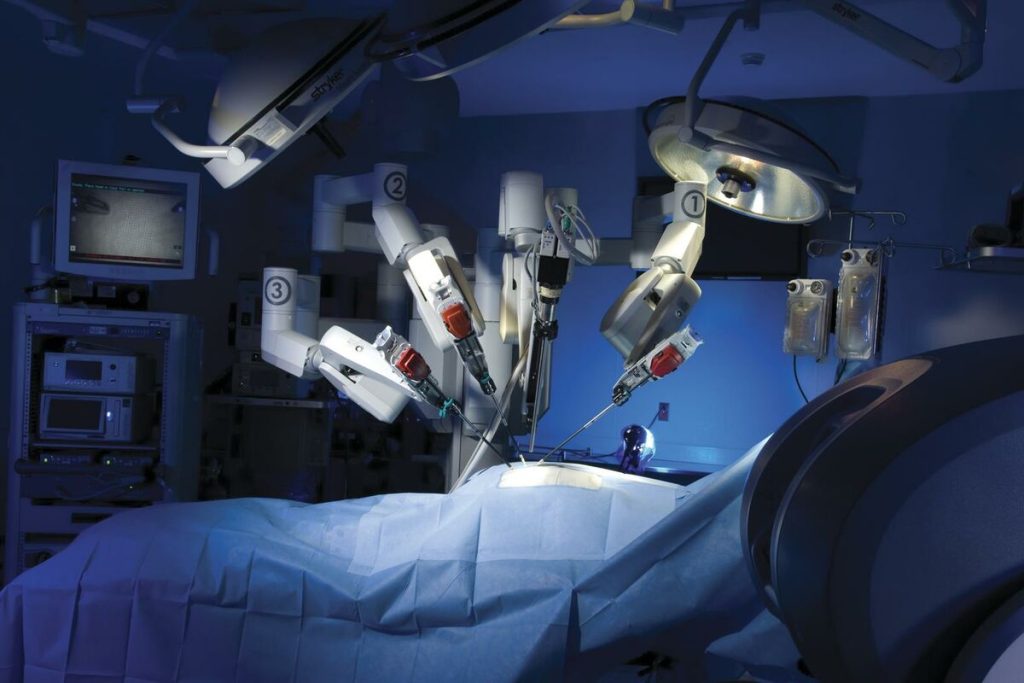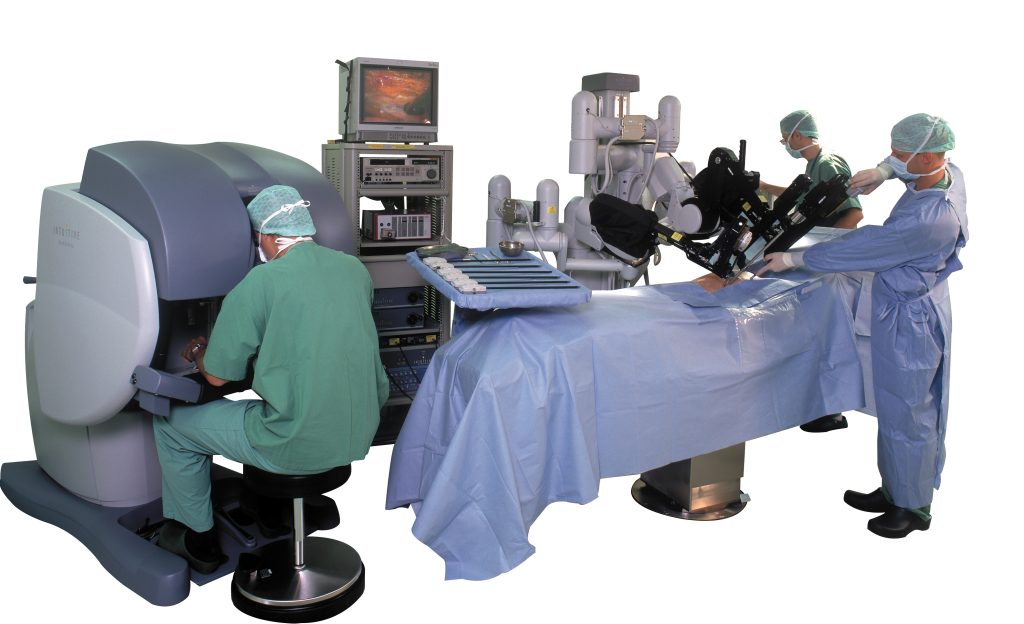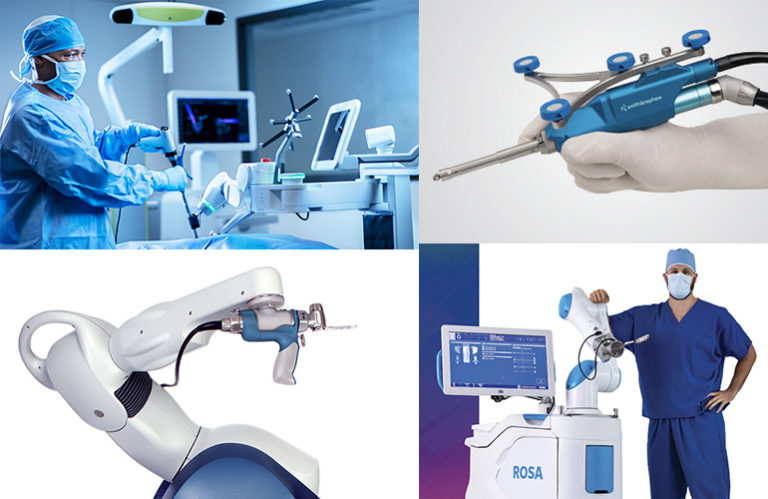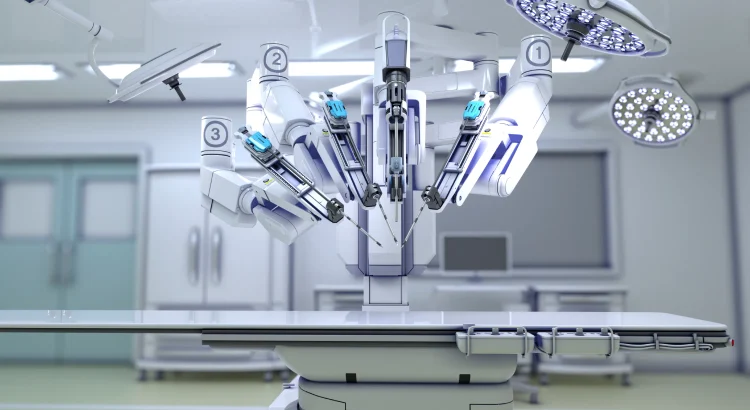Robotic assisted surgery is a cutting-edge medical technology that is revolutionizing the way surgeries are performed. In this blog post, we will explore the fascinating world of robotic assisted surgery, from its inception to its current applications and the future of robotic surgical technology. We will discuss the development of robotic surgical systems, the benefits of robotic assisted surgery, the precision and accuracy that these systems offer, and the diverse range of applications in which they are used. Join us as we delve into the incredible advancements in surgical technology and the impact they are making in the field of medicine.
Contents;
What Is Robotic Assisted Surgery?

Robotic Assisted Surgery is a cutting-edge technological advancement in the field of medicine that involves the use of robotically controlled surgical instruments to perform complex surgical procedures. This innovative technique combines the expertise of a skilled surgeon with the precision and accuracy of robotic technology to enhance surgical outcomes.
Unlike traditional surgical methods, robotic assisted surgery allows surgeons to perform minimally invasive procedures through small incisions, resulting in less pain, reduced blood loss, shorter hospital stays, and faster recovery times for patients. The robotic surgical systems provide an enhanced visualization of the surgical site, allowing surgeons to make more precise movements with greater dexterity. This ultimately leads to improved surgical outcomes, reduced complications, and better patient satisfaction.
Robotic assisted surgery is particularly beneficial in complex procedures that require a high level of precision and accuracy. This technology provides surgeons with a greater degree of control and enables them to perform intricate maneuvers with ease. The robotic instruments used in these procedures are designed to mimic the natural movements of a surgeon’s hands, wrists, and fingers, allowing for more precise and delicate surgical maneuvers. As a result, patients can experience reduced scarring, faster recovery, and improved overall surgical outcomes.
Development Of Robotic Surgical Systems

The field of surgery has seen tremendous advancements over the years, with one of the most significant being the development of robotic surgical systems. Robotic assisted surgery utilizes sophisticated robotic arms, controlled by skilled surgeons, to perform complex procedures with enhanced precision and control. The roots of robotic surgical systems can be traced back to the 1980s when the first concept of robotic surgery was introduced. However, it wasn’t until the 1990s that the first robotic surgical system, known as the Robodoc, was approved by the FDA for use in orthopedic surgeries.
Since then, robotic surgical systems have continued to evolve and become more sophisticated. One of the key milestones in the development of these systems was the introduction of the da Vinci Surgical System in the early 2000s. This groundbreaking system allowed surgeons to perform minimally invasive procedures with the assistance of robotic arms. The da Vinci Surgical System utilizes a high-definition 3D camera, robotic arms, and specialized instruments to carry out surgeries with unprecedented precision and accuracy.
The benefits of robotic assisted surgery are numerous and have revolutionized the field of surgery. These systems provide surgeons with a magnified and high-resolution view of the surgical site, enabling them to perform intricate procedures with greater clarity and detail. Additionally, robotic surgical systems offer enhanced dexterity and stability, allowing for precise movements during surgery. This level of precision minimizes the risk of complications and improves patient outcomes.
- Robotic assisted surgery is particularly advantageous in complex procedures such as cardiac surgery, urological surgery, and gynecological surgery. The system’s robotic arms can be controlled with great precision, allowing surgeons to access hard-to-reach areas and perform intricate maneuvers that would otherwise be challenging with traditional surgical techniques.
- Another significant aspect of the development of robotic surgical systems is the incorporation of artificial intelligence. AI algorithms are being used to analyze real-time data from the surgical site, enabling the robotic arms to make adjustments and adapt to changes during the procedure. This level of adaptability enhances the safety and efficiency of robotic assisted surgery.
In conclusion, the development of robotic surgical systems has revolutionized the field of surgery and opened up new possibilities for surgeons. These systems offer enhanced precision, accuracy, and improved patient outcomes. As technology continues to advance, we can expect further advancements in robotic assisted surgery, leading to even greater advancements in patient care.
| Pros | Cons |
|---|---|
| Enhanced precision and accuracy | High initial cost |
| Minimally invasive procedures | Requirement for specialized training |
| Improved patient outcomes | Limited availability in some regions |
Benefits Of Robotic Assisted Surgery
Robotic Assisted Surgery is a revolutionary medical procedure that has gained significant popularity in recent years. It combines the precision of technology with the expertise of surgeons to provide numerous benefits to patients. The use of robotic surgical systems has transformed the field of surgery by enhancing surgical capabilities and improving patient outcomes.
One of the key benefits of Robotic Assisted Surgery is the increased precision and accuracy it offers. The robotic surgical systems allow surgeons to perform complex procedures with remarkable precision, thanks to the advanced sensors and instruments. This level of precision minimizes the risk of human error and improves surgical outcomes. As a result, patients experience shorter hospital stays, reduced pain, and quicker recovery time.
Another advantage of Robotic Assisted Surgery is the reduced invasiveness of the procedures. Traditional open surgeries often require large incisions, which can result in significant trauma and scarring. However, robotic surgical systems enable surgeons to perform surgeries using smaller incisions, known as minimally invasive techniques. This leads to smaller scars, less post-operative pain, and reduced risk of infection, resulting in enhanced patient satisfaction.
The use of Robotic Assisted Surgery also allows for improved access to hard-to-reach areas of the body. The robotic instruments can be inserted through small incisions and have the ability to rotate and bend in ways that human hands cannot. This enables surgeons to navigate tight spaces and perform intricate procedures with greater ease and precision. Consequently, patients benefit from a higher success rate and improved surgical outcomes.
- In addition to these benefits, Robotic Assisted Surgery offers shorter operative times. The advanced technology and tools provided by robotic surgical systems allow surgeons to perform procedures more efficiently. The enhanced visualization and dexterity provided by the robotic instruments enable surgeons to complete surgeries in a shorter amount of time. This not only increases the overall efficiency of the operating room but also allows for a faster recovery for patients.
- Furthermore, robotic surgical systems enable surgeons to perform procedures with less physical strain. The ergonomic design of the robotic instruments allows surgeons to sit comfortably at a console, controlling the robotic arms. This reduces the strain and fatigue associated with traditional surgery, helping to prolong the careers of surgeons and prevent occupational injuries. Additionally, the robotic systems provide magnified, high-definition visuals, allowing surgeons to observe the surgical site in great detail, which further enhances the surgical precision and accuracy.
- Robotic Assisted Surgery also has the potential to improve patient access to surgical procedures. As the technology continues to advance, more hospitals and medical centers are adopting robotic surgical systems, making them more widely available. This can lead to increased accessibility for patients who may not have had access to specialized surgeries in the past. Furthermore, the benefits of robotic surgery, such as shorter hospital stays and faster recovery times, can result in cost savings for both patients and healthcare systems.
| BENEFITS OF ROBOTIC ASSISTED SURGERY |
|---|
| Increased precision and accuracy |
| Reduced invasiveness of procedures |
| Improved access to hard-to-reach areas |
| Shorter operative times |
| Less physical strain on surgeons |
| Improved patient access to surgical procedures |
In conclusion, the benefits of Robotic Assisted Surgery are numerous and have the potential to revolutionize the field of surgery. From increased precision and accuracy to reduced invasiveness and shortened recovery times, robotic surgical systems offer significant advantages to both surgeons and patients. As technology continues to advance, the future of robotic surgical technology holds even greater promise for further improving patient outcomes and expanding access to surgical procedures.
Precision And Accuracy In Robotic Surgery

Precision and accuracy are crucial factors in any surgical procedure, and robotic-assisted surgery has made significant advancements in this regard. With the help of robotic surgical systems, surgeons are now able to perform complex procedures with unmatched precision and accuracy. Robotic-assisted surgery involves the use of robotic arms controlled by a surgeon, which offer enhanced dexterity and range of motion, surpassing what is achievable with traditional laparoscopic surgery or open surgery.
One of the key advantages of robotic-assisted surgery is the magnification and stabilization of the surgical field. The robot’s arms are equipped with high-definition cameras that provide a three-dimensional view of the surgical site. This allows the surgeon to have a better visual perception and depth perception, enhancing precision during intricate procedures. The surgeon can zoom in and have a detailed view of the anatomy, ensuring that each movement is precise and accurate.
In addition to improved visualization, the robotic surgical systems also offer haptic feedback to the surgeon. This means that the surgeon can feel the resistance and response of tissues and organs as they manipulate the robotic arms. The haptic feedback provides a sense of touch and allows the surgeon to have a better understanding of the tissue characteristics, facilitating precise and accurate manipulation.
- Table: Comparison of Precision and Accuracy in Surgical Procedures
| Surgical Procedure | Robotic-Assisted Surgery | Traditional Laparoscopic Surgery | Open Surgery |
|---|---|---|---|
| Prostatectomy | High precision and accuracy in nerve-sparing techniques | Less precision, challenges in nerve-sparing techniques | Higher risks of blood loss and complications |
| Hysterectomy | Precise removal of uterus and surrounding structures | Limited range of motion, difficulty in complex cases | Large abdominal incisions, longer recovery time |
| Cancer Surgery | Precision in tumor removal, sparing healthy tissues | Challenging in delicate areas, risk of damage to healthy tissues | Invasive incisions, increased risk of infection |
Robotic-assisted surgery has also paved the way for greater precision and accuracy in microsurgery. Microsurgery involves intricate procedures such as nerve repair, blood vessel anastomosis, and tissue transplantation. The robotic surgical systems provide the surgeon with steady hands and fine control, enabling precise manipulation of tissues and delicate structures. This level of precision is especially crucial in microsurgical procedures where even the slightest error can have significant consequences.
In conclusion, precision and accuracy are paramount in surgical procedures, and robotic-assisted surgery offers immense benefits in this area. The advanced technology of robotic surgical systems allows surgeons to perform complex procedures with unmatched precision, improved visualization, haptic feedback, and steady hands. As robotic surgical technology continues to evolve, we can expect even greater advancements in precision and accuracy, ultimately leading to improved patient outcomes.
Applications Of Robotic Assisted Surgery
Robotic Assisted Surgery has revolutionized the field of medicine, with its wide range of applications. It involves the use of robotic systems to enhance surgical procedures, providing numerous benefits for both patients and surgeons alike. The precision and accuracy of these robotic systems make them highly suitable for a variety of surgical applications, ranging from complex cardiovascular procedures to minimally invasive surgeries.
One of the key applications of Robotic Assisted Surgery is in urological procedures. The use of robotic systems has greatly improved the outcomes of surgeries such as prostatectomy, nephrectomy, and cystectomy. The robotic arms can be controlled by the surgeon with utmost precision, allowing for a more precise removal of cancerous cells while minimizing damage to surrounding healthy tissues. With the assistance of robotic technology, surgeons can perform these procedures with greater accuracy, leading to reduced blood loss, shorter hospital stays, and faster recovery times for patients.
Another field where Robotic Assisted Surgery is making significant advancements is in gynecological procedures. Robotic systems have been used in various gynecologic surgeries, including hysterectomy, myomectomy, and sacrocolpopexy. The robotic arms can navigate through narrow spaces inside the pelvic region, providing surgeons with enhanced dexterity and maneuverability. This enables them to perform complex procedures with greater accuracy and precision, reducing the risk of complications and improving patient outcomes.
In addition to urological and gynecological surgeries, Robotic Assisted Surgery is also increasingly being used in the field of cardiovascular surgery. Robotic systems have been employed in procedures such as coronary artery bypass, mitral valve repair, and atrial septal defect closure. The robotic arms can assist surgeons in performing these delicate procedures with utmost precision, ensuring optimal outcomes for patients. The enhanced visualization provided by robotic systems allows for better identification of anatomical structures and precise placement of sutures, leading to improved surgical results.
- Robotic Assisted Surgery also finds its applications in orthopedic procedures. For instance, robotic systems have been used in joint replacement surgeries, such as knee and hip replacements. The precise control offered by robotic arms allows surgeons to accurately position and align the artificial joints, resulting in improved functional outcomes for patients. This technology is particularly useful for complex cases where achieving optimal alignment may be challenging.
- Moreover, Robotic Assisted Surgery has proven to be valuable in the field of head and neck surgery. Procedures such as transoral robotic surgery (TORS) have been performed using robotic systems. The robotic arms can access difficult-to-reach areas in the oral cavity and throat, allowing surgeons to remove tumors and perform reconstructive procedures with greater precision. This minimally invasive approach reduces the need for extensive incisions and can result in faster recovery times for patients.
| Applications of Robotic Assisted Surgery: |
|---|
| Urological procedures |
| Gynecological procedures |
| Cardiovascular surgery |
| Orthopedic procedures |
| Head and neck surgery |
In conclusion, the applications of Robotic Assisted Surgery are vast and continually expanding. This technology has significantly improved surgical outcomes in various medical specialties. From urology to gynecology, cardiovascular to orthopedic surgeries, and even in head and neck procedures, robotic systems have proven to be invaluable tools for surgeons. By enhancing precision, accuracy, and providing minimally invasive solutions, Robotic Assisted Surgery continues to push the boundaries of what is possible in the field of medicine.
Future Of Robotic Surgical Technology
The future of robotic surgical technology holds promising advancements in the medical field. As technology continues to evolve, so does the potential for more advanced and precise robotic assisted surgery. This revolutionary approach to surgery is transforming the way procedures are performed by combining the expertise of surgeons with the capabilities of robotic systems.
One significant aspect of the future of robotic surgical technology is the development of artificial intelligence (AI) algorithms. These algorithms have the potential to enhance surgical procedures by providing real-time feedback and guidance to surgeons during operations. With the assistance of AI, surgeons can make more informed decisions, improve surgical outcomes, and reduce the risk of complications.
In addition to AI, advancements in haptic feedback technology are also expected in the future of robotic assisted surgery. Haptic feedback refers to the sense of touch that allows surgeons to have a tactile experience during procedures. By incorporating haptic feedback into robotic surgical systems, surgeons will have a better understanding of the forces and sensations experienced by the patient’s tissues. This improved feedback can help enhance the precision and accuracy of surgical maneuvers.
- Furthermore, the future of robotic surgical technology may also witness the integration of virtual reality (VR) and augmented reality (AR) technologies. These immersive technologies can provide surgeons with a three-dimensional visualization of the patient’s anatomy, allowing for improved planning and navigation during procedures. VR and AR can also enable surgeons to practice complex surgeries in a virtual environment before performing them on actual patients, reducing the risk of errors and improving patient safety.
| Advancements in Robotics | Benefits for Surgeons | Improvements in Patient Care |
|---|---|---|
| Miniature robotic instruments | Enhanced precision and control | Reduced risk of complications |
| Smaller incisions and scars | Improved ergonomics | Quicker recovery times |
| Improved imaging and visualization | Reduced surgeon fatigue | Less blood loss |
In terms of surgical applications, the future of robotic assisted surgery is not limited to a single specialty. Robotic surgical technology is expected to expand its reach into various fields, including neurosurgery, cardiovascular surgery, and orthopedic surgery. The versatility of robotic systems allows for precise and controlled movements, making them applicable to a wide range of procedures.
In summary, the future of robotic surgical technology holds great promise in revolutionizing the field of surgery. The integration of artificial intelligence, haptic feedback, virtual reality, and augmented reality technologies will enable surgeons to perform procedures with enhanced precision, improved outcomes, and reduced risks. As advancements continue to unfold, the future of robotic assisted surgery will contribute to improved patient care and the advancement of the medical field as a whole.
